
The Untamed Beauty of Big South Fork National River and Recreation Area
Discover the rugged beauty and rich history of Big South Fork National River and Recreation Area in Kentucky, a paradise for hikers, campers, and nature enthusiasts.
Nestled in the heart of Kentucky, the Big South Fork National River and Recreation Area is a haven for nature lovers and adventure seekers alike. This expansive park covers over 125,000 acres of rugged gorges, sandstone bluffs, and lush forests. The park is renowned for its breathtaking landscapes and diverse ecosystems, making it a paradise for hikers, campers, and wildlife enthusiasts. One of the standout features of Big South Fork is its extensive trail system, which offers everything from leisurely walks to challenging hikes. The Twin Arches Trail, for example, leads to two of the largest sandstone arches in the eastern United States, offering stunning views and a sense of awe. For those who prefer water-based activities, the Big South Fork of the Cumberland River provides excellent opportunities for kayaking, canoeing, and fishing. The park is also steeped in history. Visitors can explore remnants of early settlements and coal mining communities that once thrived in the area. Interpretive programs and guided tours are available to provide deeper insights into the cultural heritage of this unique region. Whether you're looking to connect with nature, embark on an adventure, or delve into history, Big South Fork National River and Recreation Area offers something for everyone.
Local tips in Big South Fork National River and Recreation Area
- Check the weather forecast before your visit, as conditions can change rapidly in the park.
- Bring plenty of water and snacks, especially if you plan on hiking some of the longer trails.
- Wear sturdy, comfortable footwear suitable for uneven terrain and potential water crossings.
- Visit the Bandy Creek Visitor Center for maps, information, and any necessary permits.
- Consider visiting in the fall for stunning foliage and cooler temperatures.
- Keep an eye out for local wildlife, including deer, turkey, and a variety of bird species.
The Untamed Beauty of Big South Fork National River and Recreation Area
Nestled in the heart of Kentucky, the Big South Fork National River and Recreation Area is a haven for nature lovers and adventure seekers alike. This expansive park covers over 125,000 acres of rugged gorges, sandstone bluffs, and lush forests. The park is renowned for its breathtaking landscapes and diverse ecosystems, making it a paradise for hikers, campers, and wildlife enthusiasts. One of the standout features of Big South Fork is its extensive trail system, which offers everything from leisurely walks to challenging hikes. The Twin Arches Trail, for example, leads to two of the largest sandstone arches in the eastern United States, offering stunning views and a sense of awe. For those who prefer water-based activities, the Big South Fork of the Cumberland River provides excellent opportunities for kayaking, canoeing, and fishing. The park is also steeped in history. Visitors can explore remnants of early settlements and coal mining communities that once thrived in the area. Interpretive programs and guided tours are available to provide deeper insights into the cultural heritage of this unique region. Whether you're looking to connect with nature, embark on an adventure, or delve into history, Big South Fork National River and Recreation Area offers something for everyone.
When is the best time to go to Big South Fork National River and Recreation Area?
Unmissable attractions to see
Pickett CCC Memorial State Park
Discover the serene beauty and rich history of Pickett CCC Memorial State Park, a top destination for hiking and outdoor adventures in Tennessee.

Big South Fork Scenic Railway
Experience the charm of Kentucky's heritage with a scenic train ride through stunning landscapes at the Big South Fork Scenic Railway.

Natural Arch Scenic Area
Explore the breathtaking Natural Arch Scenic Area in Kentucky, where stunning landscapes and scenic hiking trails await every nature enthusiast.

Blue Heron Mining Community
Explore the historic Blue Heron Mining Community in Kentucky, where nature and industrial heritage blend seamlessly in a stunning landscape.
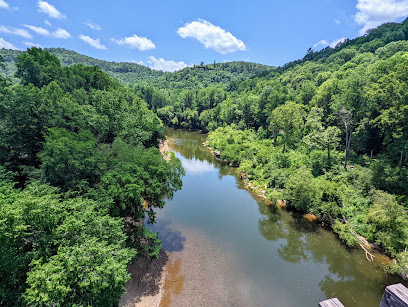
Yahoo Falls Overlook
Experience the awe-inspiring beauty of Yahoo Falls Overlook, a hidden gem in Kentucky featuring breathtaking waterfalls and serene landscapes perfect for exploration.
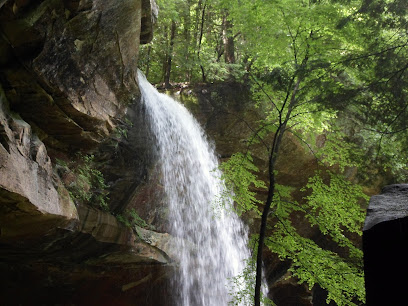
Colditz Cove State Natural Area
Explore the stunning waterfalls and tranquil trails of Colditz Cove State Natural Area, a hidden gem in Tennessee's wilderness.
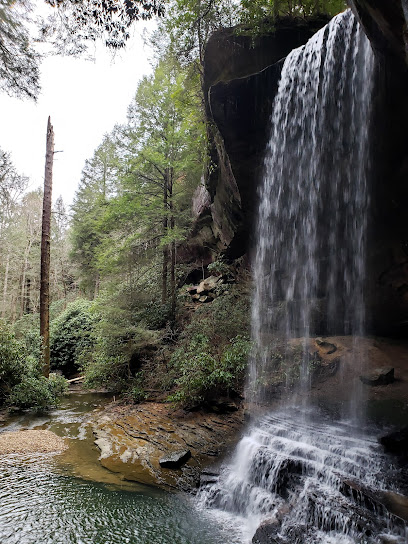
Twin Arches
Discover the breathtaking beauty of Twin Arches, a stunning natural wonder in Tennessee perfect for outdoor adventures and scenic relaxation.
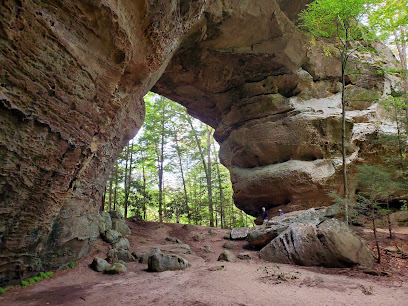
Colorblind Viewfinder: Big South Fork National River & Recreation Area-East Rim Overlook
Experience the stunning vistas and serene beauty of Big South Fork's East Rim Overlook, a must-see destination for nature lovers and adventurers alike.
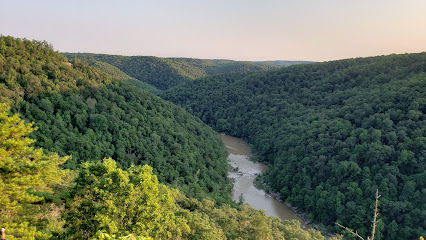
Leatherwood Ford
Explore Leatherwood Ford, a serene natural oasis in Tennessee, perfect for outdoor adventures and peaceful escapes into nature's beauty.
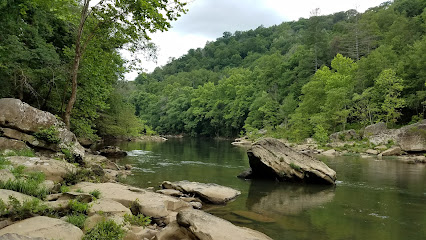
Barthell Coal Camp
Discover the rich history of Kentucky's coal mining at Barthell Coal Camp, where the past comes alive amidst stunning natural scenery.

Pogue Creek Canyon State Natural Area
Experience the breathtaking beauty of Pogue Creek Canyon State Natural Area, a nature preserve that showcases stunning landscapes and diverse wildlife.

Princess Falls Trailhead
Unveiling the natural beauty of Princess Falls Trailhead in Stearns, KY - a must-visit hiking destination with enchanting waterfalls.

Burnt Mill Bridge
Discover the beauty of Burnt Mill Bridge in Robbins, TN - a serene spot for nature lovers and photographers alike, surrounded by lush landscapes and tranquility.

Bandy Creek Visitor's Center
Explore the wonders of nature at Bandy Creek Visitor's Center, your gateway to adventure in Big South Fork National River and Recreation Area.

O&W Bridge
Discover the O&W Bridge, a historic marvel in Oneida, Tennessee, offering breathtaking views and rich historical significance.

Essential places to dine
Big South Fork National River and Recreation Area
Discover adventure at Big South Fork National River and Recreation Area: stunning landscapes, abundant wildlife, and endless outdoor activities await.

Pizza House-Pine Knot
Savor authentic Italian flavors at Pizza House-Pine Knot, where delicious pizzas and warm hospitality await you in Kentucky.

Big South Fork of the Cumberland River
Discover adventure at Big South Fork of the Cumberland River in Kentucky - a paradise for outdoor enthusiasts with breathtaking landscapes.

Markets, malls and hidden boutiques
Walmart Supercenter
Discover the convenience and variety of Walmart Supercenter in Monticello, Kentucky – your go-to destination for all your shopping needs!

Big South Fork Scenic Railway
Discover the beauty and history of Kentucky on the Big South Fork Scenic Railway, a heritage railroad that offers unforgettable scenic rides and local charm.

Dog Patch Trading Post
Explore the charm of Kentucky with unique gifts and local crafts at Dog Patch Trading Post, a must-visit destination for every traveler.

Bookland
Explore a treasure trove of books, collectibles, and gifts at Bookland in Somerset, Kentucky - a paradise for readers and collectors alike.

The Black Cat
Discover unique antiques, novelties, and toys at The Black Cat, Oneida’s charming gift shop filled with local treasures and friendly faces.

Big South Fork NRRA Bandy
Discover the breathtaking scenery and outdoor adventures at Big South Fork NRRA Bandy, a premier destination for nature lovers in Tennessee.

Big South Fork Outdoors
Your ultimate destination for outdoor gear in Kentucky, Big South Fork Outdoors has everything you need for fishing, archery, and fun in the sun.

L & S Grocery
Explore local flavors at L & S Grocery, a charming grocery store and restaurant in Monticello, Kentucky, offering fresh produce and homemade meals.

Tobacco For Less #5
Explore Tobacco For Less #5 in Monticello, Kentucky - a tobacco shop known for unbeatable prices and friendly staff, perfect for enthusiasts and casual shoppers alike.
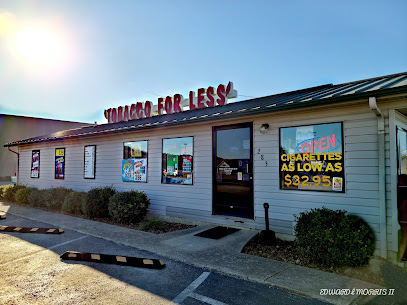
Red River Gorge General Store
Explore the Red River Gorge General Store for camping gear, sweet treats, and unique gifts in the heart of Kentucky's natural beauty.

The Emporium
Explore The Emporium in Livingston, TN - a treasure trove of unique gifts, local art, and handcrafted wonders that celebrate regional creativity.

Red River Gorge Earth Shop
Explore the Red River Gorge Earth Shop: a unique blend of art gallery, rock shop, and local treasures in the heart of Kentucky's natural beauty.

Outdoor Addiction LLC Big South Fork Outfitters
Discover the pristine beauty of Kentucky's Big South Fork with Outdoor Addiction LLC—your premier canoe and kayak rental service.

Linda's Quilt Shop Etc
Explore the world of quilting at Linda's Quilt Shop Etc in Monticello, KY, where quality fabrics and friendly service come together.

Before Town Mini Mart Grill
Experience the perfect blend of convenience and local charm at Before Town Mini Mart Grill in Pine Knot, Kentucky.
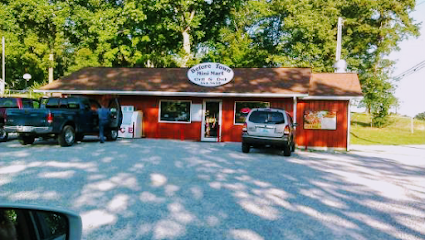
Essential bars & hidden hideouts
Big South Fork Scenic Railway
Discover the beauty and history of Kentucky with a scenic ride, delicious dining, and unique shopping at the Big South Fork Scenic Railway.

Dairy Bar
Experience the flavors of Whitley City at Dairy Bar, where comfort food meets sweet indulgence in a charming diner setting.

Raezack's Grill & Deli
Experience the best of American comfort food at Raezack's Grill & Deli in Helenwood, Tennessee, where great taste meets warm hospitality.

Preston's Steakhouse
Experience the best of American cuisine at Preston's Steakhouse, where every meal is a celebration of flavor and hospitality.

Phillips Drive In
Experience the charm of Phillips Drive In, where classic American dishes and a nostalgic atmosphere await every visitor in Oneida, Tennessee.
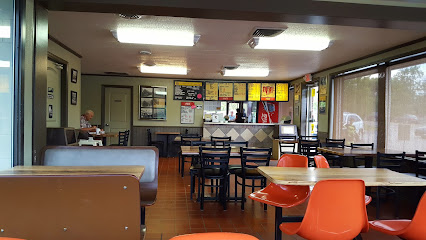
Murf's Gearbox Grill
Discover delicious American cuisine and a vibrant atmosphere at Murf's Gearbox Grill in Winfield, TN, perfect for food lovers and social gatherings.

County's BBQ
Experience authentic Southern barbecue at County's BBQ in Oneida, Tennessee, where every bite is a celebration of flavor and tradition.

The Whistle Stop
Experience the charm and flavors of The Whistle Stop, a cozy American restaurant in Stearns, Kentucky, serving comfort food in a welcoming atmosphere.
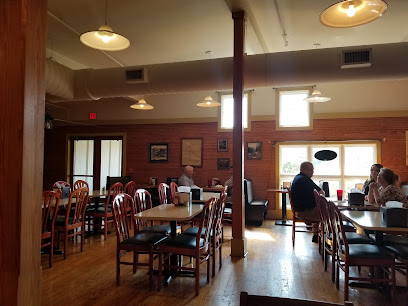
The Butchers Pub - Pineville
Discover The Butchers Pub in Pineville - a delightful bar offering local flavors, craft drinks, and a cozy ambiance in the heart of Kentucky.

The Barn Deli & Grill
Experience authentic American comfort food at The Barn Deli & Grill, Oneida's favorite spot for hearty meals and warm hospitality.

Big South Fork Motor Lodge
Discover comfort and adventure at Big South Fork Motor Lodge, your gateway to Kentucky's natural beauty and outdoor recreation.

MOOSE'S Sports Bar & Grill
Experience the vibrant atmosphere of Moose's Sports Bar & Grill in Winfield, TN, where great food and sports unite in a fun-filled setting.

Devil's Jump Overlook
Experience breathtaking views and serene landscapes at Devil's Jump Overlook, a must-visit scenic spot in beautiful Kentucky.
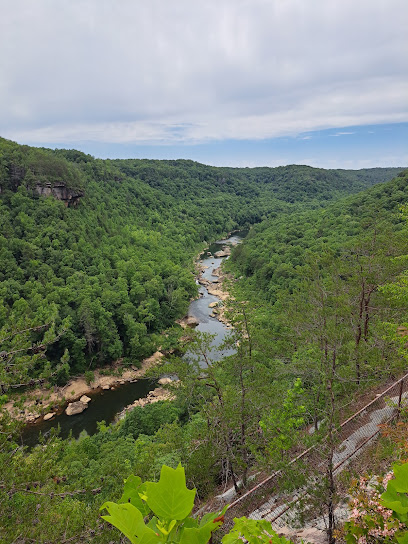
Cozy Inn
Experience the charm of Cozy Inn, a welcoming bar in Winfield, TN, offering a delightful selection of drinks and a cozy atmosphere for all visitors.

Big South Fork NRRA Bandy
Discover the natural beauty and rich history of Big South Fork NRRA in Tennessee, a perfect destination for outdoor adventure and exploration.

Local Phrases about Big South Fork National River and Recreation Area
-
- HelloHowdy
[hah-dee] - GoodbyeSee ya
[see yah] - YesYup
[yuhp] - NoNaw
[naw] - Please/You're welcomePlease
[pleez] - Thank youThanks
[thanks] - Excuse me/SorryPardon
[par-dun] - How are you?How y'all?
[hau yahl] - Fine. And you?I'm good. And you?
[ahm gud. and yuh?] - Do you speak English?Ya speak English?
[yah speak ing-glish] - I don't understandI don't git it
[ah don't git it]
- HelloHowdy
-
- I'd like to see the menu, pleaseCan I see the menu, please
[ken ah see the menu, please] - I don't eat meatI don't eat meat
[ah don't eat meet] - Cheers!Cheers!
[cheers] - I would like to pay, pleaseI'll pay now, please
[ahll pay now, please]
- I'd like to see the menu, pleaseCan I see the menu, please
-
- Help!Help!
[help] - Go away!Git!
[git] - Call the Police!Call the Sheriff!
[call the sheriff] - Call a doctor!Call the doc!
[call the doc] - I'm lostI'm lost
[ahm lost] - I'm illAh ain't feelin' good
[ah aint feelin good]
- Help!Help!
-
- I'd like to buy...I wanna buy...
[ah wanna buy] - I'm just lookingJust lookin'
[just lookin] - How much is it?How much?
[how much] - That's too expensiveThat's too much
[that's too much] - Can you lower the price?Can ya do better on the price?
[can yuh do bet-ter on the price]
- I'd like to buy...I wanna buy...
-
- What time is it?What's the time?
[whats the time] - It's one o'clockIt's one
[its one] - Half past (10)Half past ten
[half past ten] - MorningMornin'
[mornin] - AfternoonAfternoon
[afternoon] - EveningEvenin'
[evenin] - YesterdayYest'day
[yestday] - TodayToday
[today] - TomorrowTomorrah
[tomorrah] - 1One
[wun] - 2Two
[too] - 3Three
[three] - 4Four
[four] - 5Five
[five] - 6Six
[six] - 7Seven
[seven] - 8Eight
[eight] - 9Nine
[nine] - 10Ten
[ten]
- What time is it?What's the time?
-
- Where's a/the...?Where's the...?
[wheres the] - What's the address?What's the address?
[whats the address] - Can you show me (on the map)?Can ya show me (on the map)?
[can yuh show me on the map] - When's the next (bus)?When's the next (bus)?
[whens the next bus] - A ticket (to ....)A ticket (to ....)
[a ticket to]
- Where's a/the...?Where's the...?
History of Big South Fork National River and Recreation Area
-
The Big South Fork region was originally inhabited by indigenous peoples, including the Cherokee and Shawnee tribes. They utilized the area's rich resources for hunting, fishing, and gathering. Archaeological evidence suggests that these tribes lived harmoniously with nature, leaving behind artifacts and mound structures that provide insight into their way of life.
-
European settlers began exploring the Big South Fork region in the late 18th century. Some of the first explorers were long hunters and traders who ventured into the wilderness in search of game and trading opportunities. As the United States expanded westward, more settlers arrived, establishing small homesteads and communities in the rugged terrain.
-
The late 19th and early 20th centuries saw the rise of coal mining in the Big South Fork area. The region's rich coal seams attracted numerous mining companies, leading to the establishment of mining towns such as Blue Heron and Yamacraw. These towns thrived for several decades, with communities centered around the coal industry. However, as the demand for coal declined, many of these towns were abandoned, leaving behind ghost towns and remnants of a once-bustling industry.
-
In addition to coal mining, the Big South Fork region was also known for its timber industry. Logging operations flourished in the early 20th century, with timber harvested from the dense forests and transported via railroads and rivers. The timber boom provided employment for many local residents, but it also led to significant deforestation and environmental changes in the area.
-
The establishment of Big South Fork National River and Recreation Area was a significant milestone in the region's history. In 1974, the United States Congress authorized the creation of the park to protect the area's natural beauty, cultural heritage, and recreational opportunities. Managed by the National Park Service, the park encompasses over 125,000 acres of rugged terrain, scenic gorges, and free-flowing rivers, offering visitors a chance to explore and enjoy the natural wonders of the region.
-
The Big South Fork region is rich in cultural heritage, with efforts made to preserve and interpret its history. The National Park Service has restored and maintained historical sites such as the Blue Heron Mining Community, offering guided tours and exhibits that provide insight into the lives of coal miners and their families. Additionally, the park hosts cultural events and programs that celebrate the traditions and stories of the area's past inhabitants.
Big South Fork National River and Recreation Area Essentials
-
Big South Fork National River and Recreation Area is located in the southeastern part of Kentucky, USA, and extends into Tennessee. The nearest major airport is McGhee Tyson Airport (TYS) in Knoxville, Tennessee, approximately 85 miles away. From there, you can rent a car or take a shuttle service to the park. Alternatively, Nashville International Airport (BNA) in Tennessee is about 150 miles from the park. Public transportation options are limited, so renting a car is highly recommended.
-
Within the Big South Fork National River and Recreation Area, personal vehicles are the most convenient mode of transportation. The park has several well-maintained roads and parking areas near major trailheads and attractions. While there are no public buses or trains servicing the park, bicycles and horses are popular alternatives for exploring the trails. Some local outfitters offer shuttle services for river activities and guided tours.
-
The official currency in the United States is the US Dollar (USD). Credit and debit cards are widely accepted in most establishments, including visitor centers, restaurants, and gas stations. However, it is advisable to carry some cash, especially when visiting more remote areas of the park where card payment facilities may not be available. ATMs are available in nearby towns such as Oneida and Stearns.
-
Big South Fork National River and Recreation Area is generally a safe destination for tourists. However, it's important to take standard precautions. Keep an eye on your belongings and avoid leaving valuables in your car. The park is vast and remote, so always let someone know your plans and expected return time when hiking or exploring. Be aware of wildlife, and never approach or feed animals. There are no specific high-crime areas targeting tourists, but it's always best to stay vigilant.
-
In case of an emergency, dial 911 for immediate assistance. The park has several ranger stations where you can seek help. It's advisable to carry a first-aid kit and know the location of the nearest medical facilities, which are in nearby towns like Oneida and Whitley City. For minor health issues, you can find over-the-counter medications at local pharmacies. Make sure to have travel insurance that covers medical emergencies.
-
Fashion: Do wear comfortable, weather-appropriate clothing and sturdy hiking boots. Avoid wearing flip-flops or open-toed shoes on trails. Religion: There are no specific religious customs to follow, but always respect local traditions and any religious sites you may visit. Public Transport: Public transportation options are limited; plan to rent a car. Greetings: A simple 'hello' or 'hi' is a common greeting. Don't be surprised if locals engage in friendly small talk. Eating & Drinking: Do try local Southern cuisine at nearby restaurants. Don't litter; always pack out what you pack in.
-
To experience Big South Fork National River and Recreation Area like a local, visit during the shoulder seasons (spring and fall) to avoid the summer crowds. Engage with the local community at events and festivals in nearby towns. Don't miss a visit to the Blue Heron Mining Community for a glimpse into the area's coal mining history. For a unique experience, take a horseback riding tour or a guided river trip. Always check in at the visitor center for the latest information on trail conditions and local wildlife sightings.
Nearby Cities to Big South Fork National River and Recreation Area
-
Things To Do in Knoxville
-
Things To Do in Pigeon Forge
-
Things To Do in Gatlinburg
-
Things To Do in Lebanon
-
Things To Do in Bardstown
-
Things To Do in Elizabethtown
-
Things To Do in Lexington
-
Things To Do in Murfreesboro
-
Things To Do in Chattanooga
-
Things To Do in Smyrna
-
Things To Do in Hendersonville
-
Things To Do in Frankfort
-
Things To Do in Nashville
-
Things To Do in Johnson City
-
Things To Do in Franklin










